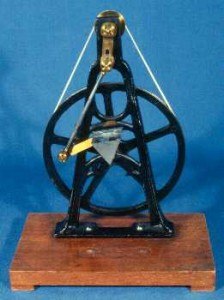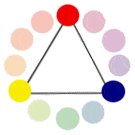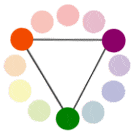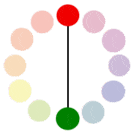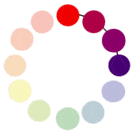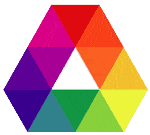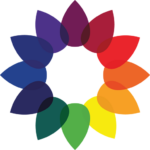
Sir Issac Newton developed the Color Circle in 1666.
Newton set up a prism near his window, and projected a beautiful spectrum 22 feet onto the far wall.
The prism can be used to split a narrow beam of white light into a spectrum. It can also be used to reverse the process. One way to do this is to produce a spectrum with a prism, and then blur it by rocking the prism. The prism is rocked by turning the crank.
The device above is in the National Museum of American History at the Smithsonian Institution.
His most useful idea for artists was his conceptual arrangement of colors around the circumference of a circle, which allowed the painters’ primaries (red, yellow, blue) to be arranged opposite their complementary colors (e.g. red opposite green)

Today the arrangement of colors around the Color Wheel is in correspondence with the wavelengths of light as opposed to hues, in accord with the original color circle of Isaac Newton.
Color Terminology
Primary Colors:
Those colors that cannot be created by mixing other colors. Red, Blue & Yellow.
Secondary Colors:
The colors you get when mixing two primaries. Orange, Purple & Green.
Tertiary colors:
The colors achieved by mixing primary and secondary hues.
Complementary Colors:
The colors located opposite each other on a color wheel.
Analogous Colors:
The colors located close together on a color wheel.
Color Relationships:
Color relationships can be displayed as a color wheel or a color triangle.
The painters color triangle consists of colors often used by a paint contractor. These are the colors we learn about as children. The primary colors of red, blue and yellow.

